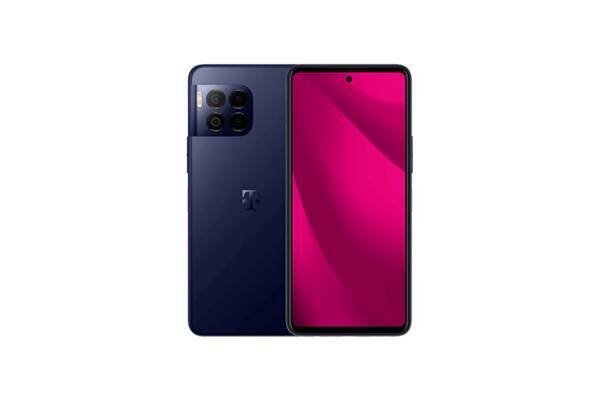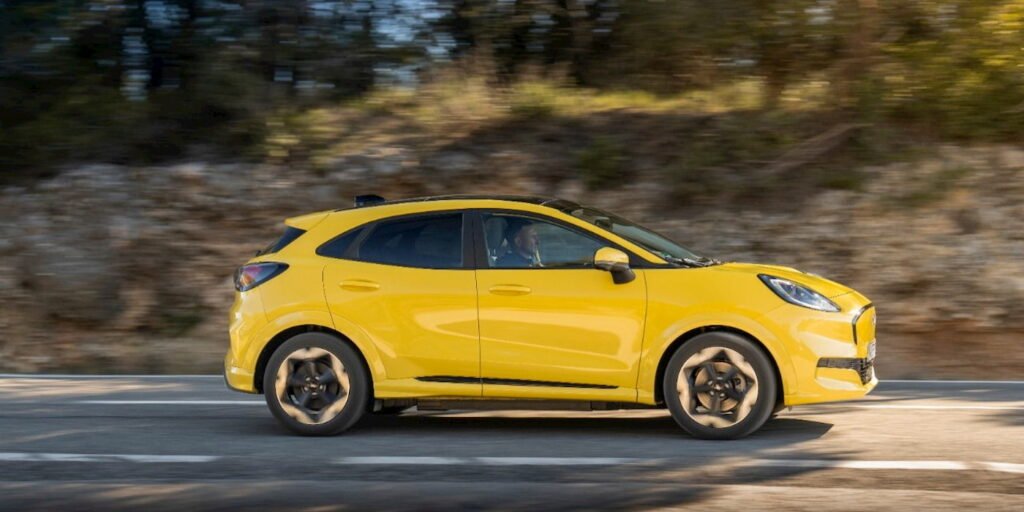Battery Electric Vehicle (BEV) Market Size and Share Forecast Outlook 2025 to 2035
The battery electric vehicle (BEV) market, estimated at USD 0.5 trillion in 2025 and projected to reach USD 2.0 trillion by 2035 at a CAGR of 15.0%, exhibits significant contribution differentiation by technology, with battery chemistry, motor design, and power electronics forming the primary drivers of value creation. Lithium-ion battery systems dominate the market, accounting for a substantial portion of the overall market value due to their superior energy density, cycle life, and scalability across passenger and commercial BEV segments.
Advances in solid-state and lithium-sulfur batteries are gradually contributing to market expansion by enhancing range and safety, thereby influencing overall adoption trends. Electric drivetrain technology, comprising motors, inverters, and controllers, contributes critically to vehicle efficiency, performance, and cost optimization. Permanent magnet synchronous motors remain a primary choice for efficiency and torque density, while induction motors see selective adoption for cost-sensitive applications. Battery management systems and power electronics are increasingly integrated with advanced thermal management and fast-charging capabilities, further elevating the contribution of these technologies to the overall market valuation.
Software integration and vehicle connectivity technologies, although secondary in immediate revenue impact, play an essential role in improving operational efficiency and enabling predictive maintenance, indirectly enhancing market value. Over the forecast period, incremental technology innovations, particularly in battery chemistry and high-efficiency drivetrains, are expected to contribute more than half of the market growth, underscoring the technology-driven nature of the BEV market’s expansion.
Quick Stats for Battery Electric Vehicle (BEV) Market
- Battery Electric Vehicle (BEV) Market Value (2025): USD 0.5 trillion
- Battery Electric Vehicle (BEV) Market Forecast Value (2035): USD 2.0 trillion
- Battery Electric Vehicle (BEV) Market Forecast CAGR: 15.0%
- Leading Segment in Battery Electric Vehicle (BEV) Market in 2025: Electric cars (47.8%)
- Key Growth Regions in Battery Electric Vehicle (BEV) Market: North America, Asia-Pacific, Europe
- Top Key Players in Battery Electric Vehicle (BEV) Market: Tesla Inc., BMW, Volkswagen AG, Ford Motor Company, Toyota Motor Corporation, Hyundai Motor Company, Nissan Motor Corporation, Energica Motor Company S.p.A
-market-market-value-analysis.webp)
Battery Electric Vehicle (BEV) Market Key Takeaways
| Metric | Value |
|---|---|
| Battery Electric Vehicle (BEV) Market Estimated Value in (2025 E) | USD 0.5 trillion |
| Battery Electric Vehicle (BEV) Market Forecast Value in (2035 F) | USD 2.0 trillion |
| Forecast CAGR (2025 to 2035) | 15.0% |
The battery electric vehicle market is regarded as a rapidly expanding segment within the global automotive and electric mobility sectors. It is estimated to hold 6.8% of the overall automotive industry, reflecting growing adoption of electrified mobility. Within the electric vehicle market, BEVs account for 42.1%, driven by demand for zero-emission vehicles and government incentives. Commercial fleet vehicles contribute 3.7%, supported by logistics and municipal electrification initiatives.
Passenger vehicles hold a 5.5% share, reflecting rising consumer adoption of EVs. Automotive powertrain systems account for 2.9%, driven by integration of advanced battery, inverter, and electric motor technologies. Recent industry trends have been shaped by advancements in battery technology, extended driving range, and fast charging infrastructure deployment. Groundbreaking developments include solid state batteries, vehicle-to-grid integration, and modular powertrain architectures. Key players are investing in strategic partnerships with battery manufacturers, charging network providers, and software developers to enhance vehicle performance and customer experience. Expansion of gigafactories, localized manufacturing, and supply chain resilience are major focus areas.
Regional growth is led by China and Europe, driven by policy support and high EV adoption, while North America focuses on fleet electrification and luxury EV models. Energy-dense batteries, improved thermal management, and AI-driven battery management systems continue to strengthen market competitiveness.
Why is the Battery Electric Vehicle (BEV) Market Growing?
The battery electric vehicle (BEV) market is undergoing accelerated expansion, supported by global policy mandates, advancements in battery technology, and expanding charging infrastructure. Increasing regulatory emphasis on emission reduction, coupled with government incentives, is fostering rapid consumer adoption across multiple regions. Automakers are investing heavily in production capacity, model diversification, and integration of advanced digital systems to enhance performance and driving range.
Supply chain optimization for key components, particularly batteries, is being prioritized to address cost pressures and ensure stable availability. Rising fuel prices and heightened environmental awareness are further influencing the transition toward electric mobility.
In mature markets, replacement demand and fleet electrification initiatives are sustaining momentum, while emerging economies are witnessing growing penetration driven by urban mobility programs. Over the forecast period, technological innovation, economies of scale, and supportive policy frameworks are expected to solidify BEVs’ position in mainstream transportation, with sustained revenue growth anticipated across both passenger and commercial vehicle segments.
Segmental Analysis
The battery electric vehicle (BEV) market is segmented by vehicle, battery type, and geographic regions. By vehicle, the battery electric vehicle (BEV) market is divided into Electric cars, Electric buses, Electric trucks, Electric motorcycles & scooters, and E-bikes. In terms of battery type, the battery electric vehicle (BEV) market is classified into Li-ion, SLA, and NiMH. Regionally, the battery electric vehicle (BEV) industry is classified into North America, Latin America, Western Europe, Eastern Europe, Balkan & Baltic Countries, Russia & Belarus, Central Asia, East Asia, South Asia & Pacific, and the Middle East & Africa.
Insights into the Vehicle Segment
-market-analysis-by-vehicle.webp)
The electric cars segment, holding 47.80% of the vehicle category, has established dominance through widespread consumer acceptance, a broad range of available models, and consistent advancements in performance metrics. This share is being sustained by ongoing investments from global automotive manufacturers in design innovation, safety enhancements, and integration of autonomous and connected vehicle technologies. The segment benefits from well-developed sales and service networks, making it more accessible to mainstream buyers.
Competitive pricing strategies, supported by falling battery costs, are narrowing the price gap with internal combustion engine vehicles, further driving adoption. Enhanced charging infrastructure availability, particularly in urban areas, is facilitating convenience and boosting consumer confidence.
Long-term demand is being reinforced by corporate and municipal fleet electrification programs, as well as favorable financing and leasing options. These factors, combined with brand diversification and global marketing strategies, are expected to ensure continued leadership for electric cars within the BEV market.
Insights into the Battery Type Segment
-market-analysis-by-battery-type.webp)
The Li-ion battery segment, accounting for 61.50% of the battery type category, has maintained its lead due to its superior energy density, longer lifecycle, and declining production costs. Technological advancements in cathode and anode materials have improved performance and reduced degradation rates, enabling greater driving ranges and faster charging capabilities. This segment benefits from established manufacturing infrastructure and economies of scale, which have significantly lowered per-kilowatt-hour costs over the past decade.
Supply chain integration, including vertical alignment with raw material suppliers, has helped mitigate volatility in critical mineral markets. The segment’s adaptability across different vehicle classes and its compatibility with advanced battery management systems have further strengthened its position.
Ongoing research into solid-state variants and next-generation chemistries is expected to enhance efficiency and safety, ensuring Li-ion remains the preferred choice for BEV applications in the foreseeable future. Global capacity expansions by major battery producers are likely to reinforce availability and support continued market leadership.
What are the Drivers, Restraints, and Key Trends of the Battery Electric Vehicle (BEV) Market?
The BEV market has witnessed substantial growth due to the accelerating shift toward clean transportation, supportive government policies, and advancements in battery and charging technologies. BEVs are gaining traction in passenger, commercial, and fleet segments, driven by rising environmental awareness and the push to reduce greenhouse gas emissions.
Demand has been fueled by improvements in range, performance, and affordability, along with expanding charging infrastructure and incentives for adoption. Regional growth varies based on policy frameworks, energy availability, and technological readiness, highlighting the strategic importance of BEVs in achieving sustainability targets and decarbonization goals in the automotive industry.
Government incentives and policy support drive adoption
Government initiatives have been instrumental in accelerating BEV adoption. Tax credits, subsidies, low-interest loans, and exemption from tolls or registration fees have made BEVs more attractive to consumers and commercial fleet operators. Regulations aimed at reducing carbon emissions, including stricter fuel efficiency standards and urban low-emission zones, have encouraged automotive manufacturers to expand their BEV offerings. In regions like Europe, North America, and China, governments have set ambitious electrification targets, creating strong market demand. Incentive programs also support charging infrastructure development, ensuring that consumers have access to convenient refueling options, which directly impacts purchase decisions and overall adoption rates.
Charging infrastructure expansion supports market growth
The development of a robust charging network is crucial for BEV adoption. Public and private charging stations, including fast and ultra-fast chargers, reduce refueling time and increase convenience for consumers. Home charging solutions complement workplace and public infrastructure, enabling flexible charging patterns. Collaboration among automotive manufacturers, energy providers, and governments has facilitated widespread infrastructure deployment. Regions with dense, accessible charging networks demonstrate higher adoption rates due to reduced range anxiety and improved convenience. Expansion of charging networks in urban centers, highways, and remote areas ensures that BEVs remain practical for both daily commuting and long-distance travel, supporting long-term market growth.
Consumer awareness and environmental consciousness influence adoption
Increasing awareness of climate change, air pollution, and energy sustainability is influencing consumer preference toward BEVs. Buyers are considering lifecycle emissions, fuel cost savings, and contributions to environmental preservation. Corporate fleets are also transitioning to BEVs to meet sustainability goals, enhance brand image, and comply with government mandates. Social acceptance is growing as more consumers experience BEV performance, safety, and reliability firsthand. Marketing campaigns emphasizing environmental benefits, cost efficiency, and technological innovation have further reinforced adoption. This shift in perception has accelerated BEV penetration across passenger cars, commercial fleets, and specialized vehicles, making environmental consciousness a key driver of market expansion.
Supply chain and cost challenges affect growth
Despite strong demand, BEV growth is impacted by supply chain limitations, high initial costs, and raw material dependencies. Lithium, cobalt, nickel, and rare earth metals are essential for battery production, creating supply risks and price volatility. Manufacturing capacity, logistics, and recycling of end-of-life batteries are key operational considerations. Companies are investing in vertical integration, strategic partnerships, and battery recycling programs to mitigate risks and reduce costs. Government support for localized production and resource extraction also plays a role in stabilizing supply. Addressing these challenges is critical to ensure the scalability, affordability, and sustainability of BEVs as market demand continues to grow globally.
Analysis of Battery Electric Vehicle (BEV) Market By Key Countries
-market-cagr-analysis-by-country.webp)
| Country | CAGR |
|---|---|
| China | 20.3% |
| India | 18.8% |
| Germany | 17.3% |
| France | 15.8% |
| UK | 14.3% |
| USA | 12.8% |
| Brazil | 11.3% |
China leads the BEV market with a forecast CAGR of 20.3%, driven by extensive government incentives, large-scale EV manufacturing, and expansion of charging infrastructure. India follows at 18.8%, supported by growing adoption of electric mobility solutions and localized production initiatives. Germany records 17.3%, benefiting from strong automotive engineering, R&D investments, and deployment of next-generation EV platforms. The United Kingdom posts 14.3%, propelled by focus on sustainable transportation and EV infrastructure development. The United States registers 12.8%, where federal incentives, private investment, and major automakers’ EV strategies sustain market growth. Collectively, these countries represent a dynamic landscape of production, innovation, and adoption in the global BEV market. This report includes insights on 40+ countries; the top markets are shown here for reference.
Demand Forecast for Battery Electric Vehicle Market in China
China is expected to witness substantial growth in the market with a CAGR of 20.3%, driven by strong government incentives, increasing adoption of clean mobility solutions, and expansion of charging infrastructure. Urban and intercity transportation sectors are rapidly shifting toward electric vehicles due to emission regulations and rising environmental awareness. Leading automakers are introducing advanced BEV models with higher battery efficiency, longer range, and integrated smart features. Investments in battery technology, electric powertrains, and renewable energy-powered charging stations are supporting the market expansion. Consumer interest in sustainable and cost-effective transportation is also accelerating BEV adoption across private and commercial sectors in China.
- Government policies and incentives promote adoption of electric vehicles
- Expansion of charging infrastructure supports wide-scale deployment
- Technological advancements in batteries enhance vehicle performance and range
Future Outlook for Battery Electric Vehicle Market in India
India is projected to grow at a CAGR of 18.8% in the BEV market, stimulated by rising awareness of sustainable transportation and increasing government subsidies for electric mobility. Growing investments in charging networks and battery production facilities are enhancing accessibility and reducing consumer range anxiety. Automobile manufacturers are introducing models tailored for urban and semi-urban segments, offering improved energy efficiency and affordability. The industrial push toward emission reduction, combined with consumer inclination toward eco-friendly vehicles, is further driving adoption. Expansion of renewable energy sources to power charging stations is also shaping a favorable market environment for battery electric vehicles across India.
- Government incentives and subsidies encourage EV adoption
- Development of charging infrastructure reduces operational barriers
- Urban-focused BEV models improve affordability and convenience
Growth Analysis of Battery Electric Vehicle Market in Germany
-market-europe-country-market-share-analysis,-2025-&-2035.webp)
Germany is expected to expand at a CAGR of 17.3% in the market, supported by stringent emission regulations, government incentives, and strong investment in charging infrastructure. German automakers are innovating with high-capacity battery packs, enhanced vehicle range, and integrated digital mobility features. Corporate fleets and commercial transportation are increasingly shifting to BEVs to meet sustainability targets. Consumer adoption is also influenced by lower running costs and access to smart charging networks. The country’s industrial ecosystem, coupled with strong policy support, ensures continuous growth for electric vehicles while driving technological advancement in the automotive sector.
- Emission regulations stimulate electric vehicle adoption
- Corporate and fleet adoption accelerates market demand
- Innovative technologies improve battery efficiency and mobility
Comprehensive Analysis of Battery Electric Vehicle Market in the United Kingdom
The United Kingdom is projected to grow at a CAGR of 14.3% in the BEV market due to government-led initiatives, expansion of charging networks, and consumer focus on low-emission vehicles. Public and private sectors are encouraging the adoption of electric mobility through fiscal incentives, tax breaks, and infrastructure investments. Vehicle manufacturers are launching diverse BEV models with extended range, better battery management, and advanced safety systems. Urban commuters and fleet operators are increasingly selecting electric vehicles to reduce environmental impact. Policy mandates combined with growing public awareness of climate change contribute significantly to market growth across the UK.
- Government incentives and tax benefits support BEV uptake
- Urban and fleet adoption drives market expansion
- Battery and safety technology enhancements boost consumer confidence
Battery Electric Vehicle Market Growth Outlook in the United States
-market-country-value-analysis.webp)
The United States is expected to expand at a CAGR of 12.8% in the market, driven by federal incentives, emission reduction initiatives, and growing environmental consciousness among consumers. Significant investments in public and private charging infrastructure are improving accessibility for electric vehicles. Automakers are launching BEVs with longer ranges, enhanced battery performance, and smart connectivity options to appeal to tech-savvy buyers. Corporate sustainability goals and government regulations are encouraging commercial fleet electrification. Consumer preference for clean, efficient, and cost-effective mobility solutions is further accelerating adoption across urban, suburban, and intercity transportation segments in the US.
- Federal incentives and emission regulations drive adoption
- Charging network expansion enhances consumer convenience
- Technological innovation improves vehicle efficiency and connectivity
Competitive Landscape of Battery Electric Vehicle (BEV) Market
-market-analysis-by-company.webp)
The BEV market is dominated by manufacturers delivering zero-emission mobility solutions with advanced electric drivetrains, energy-dense batteries, and integrated smart technologies. Tesla Inc. remains a key player with high-performance vehicles, extensive charging infrastructure, and cutting-edge battery management systems, setting benchmarks for range and efficiency. BMW and Volkswagen AG focus on premium and mass-market BEVs, offering scalable platforms, modular battery packs, and connected mobility features to meet diverse consumer preferences. Ford Motor Company and Toyota Motor Corporation emphasize electrification of popular vehicle segments, combining established manufacturing expertise with innovations in battery efficiency and thermal management.
Hyundai Motor Company and Nissan Motor Corporation expand the market with competitive pricing, reliability, and broad product portfolios, including sedans, SUVs, and crossovers. Energica Motor Company S.p.A addresses niche high-performance electric motorcycles, integrating lightweight battery solutions and rapid-charging capabilities. Collectively, these providers drive adoption of electric mobility by enhancing vehicle performance, charging convenience, and sustainability, shaping the future of zero-emission transportation worldwide.
Key Players in the Battery Electric Vehicle (BEV) Market
- Tesla Inc.
- BMW
- Volkswagen AG
- Ford Motor Company
- Toyota Motor Corporation
- Hyundai Motor Company
- Nissan Motor Corporation
- Energica Motor Company S.p.A
Scope of the Report
| Item | Value |
|---|---|
| Quantitative Units | USD 0.5 Trillion |
| Vehicle | Electric cars, Electric buses, Electric trucks, Electric motorcycles & scooters, and E-bikes |
| Battery Type | Li-ion, SLA, and NiMH |
| Regions Covered | North America, Europe, Asia-Pacific, Latin America, Middle East & Africa |
| Country Covered | United States, Canada, Germany, France, United Kingdom, China, Japan, India, Brazil, South Africa |
| Key Companies Profiled | Tesla Inc., BMW, Volkswagen AG, Ford Motor Company, Toyota Motor Corporation, Hyundai Motor Company, Nissan Motor Corporation, and Energica Motor Company S.p.A |
| Additional Attributes | Dollar sales by vehicle type and battery capacity, demand dynamics across passenger, commercial, and luxury segments, regional trends in EV adoption, innovation in range, charging infrastructure, and energy efficiency, environmental impact of battery production and lifecycle, and emerging use cases in shared mobility, fleet electrification, and autonomous electric transport. |







